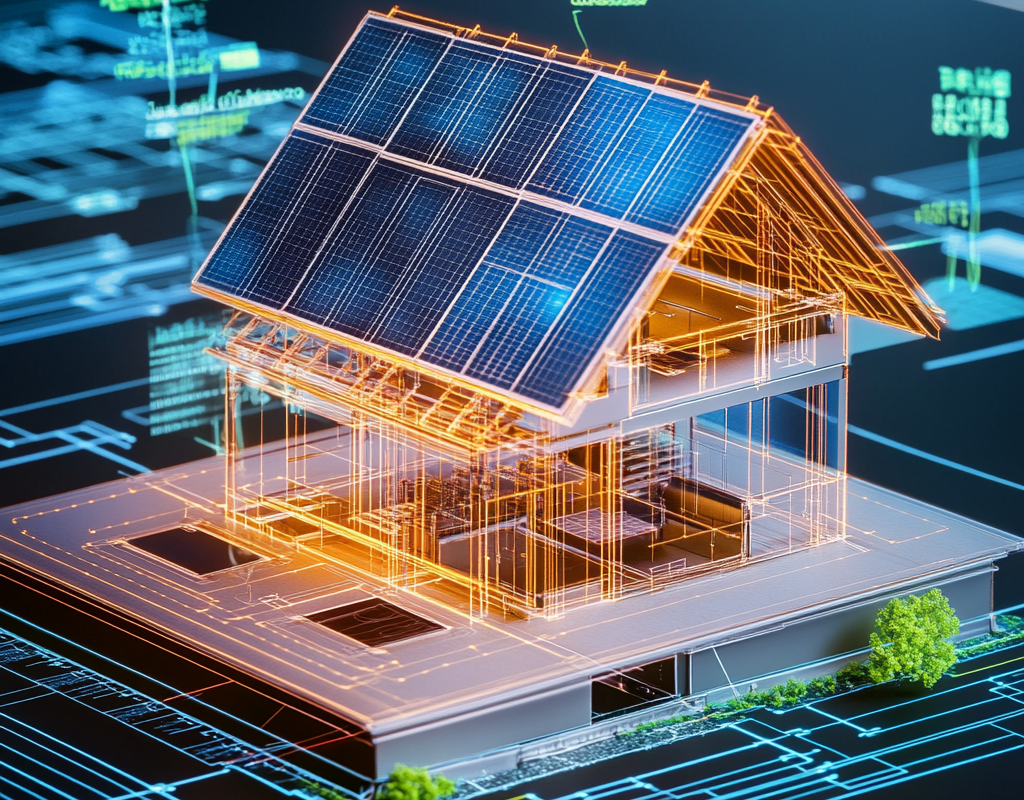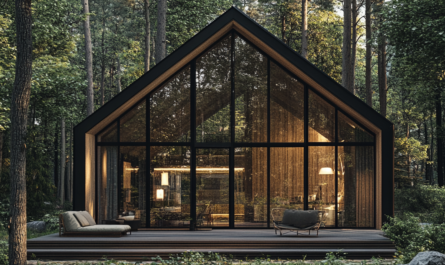Modern energy efficient building materials
Energy saving technologies play a key role in modern construction as they help reduce operating costs and reduce environmental impact. Insulated panels, energy-efficient double glazed windows and foam concrete have become standard for new buildings. These materials provide high thermal insulation, minimize heat loss and reduce energy consumption for heating and cooling. For example, multilayer double-glazed windows with low-emission coatings effectively retain heat in winter and prevent overheating in summer, creating a comfortable microclimate.
Eco-friendly building materials are also gaining popularity. Recycled materials such as wood composites or recycled bricks can significantly reduce the carbon footprint of construction. In addition, innovations in the field of nanomaterials make it possible to create coatings with unique properties, such as self-cleaning or additional thermal insulation. These technologies have already become an integral part of green building, which contributes to long-term savings and reduction of environmental burden.
Smart energy management systems
Smart home technologies go beyond simply controlling lighting or appliances. IoT-based smart energy management systems offer a wide range of capabilities. For example, smart thermostats automatically adjust the room temperature by analyzing the occupants’ habits and weather conditions. Energy consumption monitoring systems allow you to track energy consumption in real time, find sources of overconsumption and correct them in a timely manner.
Integration of smart systems with mobile applications gives users complete control over all processes. Property owners can remotely turn on or off heating, lighting or ventilation systems, which is especially convenient for long trips. In addition, artificial intelligence plays an important role in predicting energy consumption, helping to optimize the operation of all systems and save resources without compromising comfort.
Renewable Energy in Real Estate
Renewable energy sources are becoming an integral part of energy efficient buildings. Solar panels are widely used in both residential and commercial buildings. They allow you to convert solar energy into electricity, reducing utility costs. In regions with sufficient wind activity, compact wind generators are installed, which provide additional energy supply. The combined use of solar panels and wind generators allows you to achieve maximum autonomy.
Energy storage plays a key role in this ecosystem. Modern lithium-ion batteries are capable of storing excess energy generated during the day for use at night or on cloudy days. This not only increases the system’s resistance to external factors, but also makes the property more independent from central power grids. In addition, such technologies open up opportunities to sell excess energy back to the grid, creating an additional source of income.
Innovative insulation and insulation technologies
Innovations in insulation and insulation are opening new horizons in improving the energy efficiency of buildings. Aerogels, which are used in the aviation and space industries, are now finding applications in construction. These materials have incredibly low thermal conductivity with minimal thickness, which is especially useful when renovating old buildings. Heat-reflective coatings created on the basis of nanotechnology can reflect up to 90% of solar radiation, preventing overheating of rooms in the summer.
Building sealing also plays a key role in reducing heat loss. The use of membrane materials allows not only to retain heat, but also to prevent the formation of condensation, which protects structures from mold and destruction. Heat recovery ventilation systems have become another important element that provides fresh air without significant loss of thermal energy, maintaining a comfortable indoor temperature.
Energy efficient lighting and HVAC systems
Energy-efficient lighting and climate control (HVAC) systems have a significant impact on a building’s overall energy consumption. LED lighting has become indispensable due to its durability and low energy consumption. Modern LEDs consume five times less energy compared to traditional incandescent lamps. In addition to this, automatic lighting control systems are used that adjust the light intensity depending on external conditions and the presence of people in the room.
HVAC systems have also undergone significant changes. Innovative technologies make it possible not only to more accurately control temperature and humidity, but also to use heat recycling to heat rooms. For example, heat pump systems extract energy from the environment, which significantly reduces costs. Additionally, the introduction of smart sensors helps maintain ideal living and working conditions while minimizing energy costs.
Development prospects and energy saving trends
Modern energy saving technologies in real estate are rapidly developing, offering more and more effective solutions. These innovations are aimed at reducing costs, minimizing environmental impact and improving the comfort of occupants and building users. Prospects for development in this area cover several key areas.
- Artificial intelligence is actively being introduced into energy management systems. This allows you to automatically regulate heating, lighting and ventilation to achieve maximum efficiency.
- The production of building materials with a zero carbon footprint is becoming an important trend. Companies are developing environmentally friendly materials that minimize damage to the environment.
- Hybrid systems that combine solar and wind energy with traditional sources provide stable energy supply and reduce dependence on central grids.
- Energy storage technologies are becoming more accessible. The new batteries can effectively store and store energy, making them suitable for both the private sector and large facilities.
- Government support for green construction is increasing. Many countries are introducing subsidies and incentive programs to encourage the adoption of energy efficient technologies.
These areas of development of energy-saving technologies form the basis for a sustainable future in the construction and operation of real estate. Their implementation contributes to both economic benefits and improvement of the environmental situation. In the coming years, we will see even more innovations that will make energy saving accessible and effective for everyone
Questions and answers
Answer 1: Thermal insulation panels, energy-saving double-glazed windows, foam concrete and nanomaterials.
Answer 2: They automatically adjust temperature, lighting, and energy consumption based on user behavior and environmental conditions.
Answer 3: Modern lithium-ion batteries store excess energy for later use.
Answer 4: Aerogels, heat-reflective coatings and membrane materials for sealing.
Answer 5: LED lamps, automatic light sensors and heat pumps.




